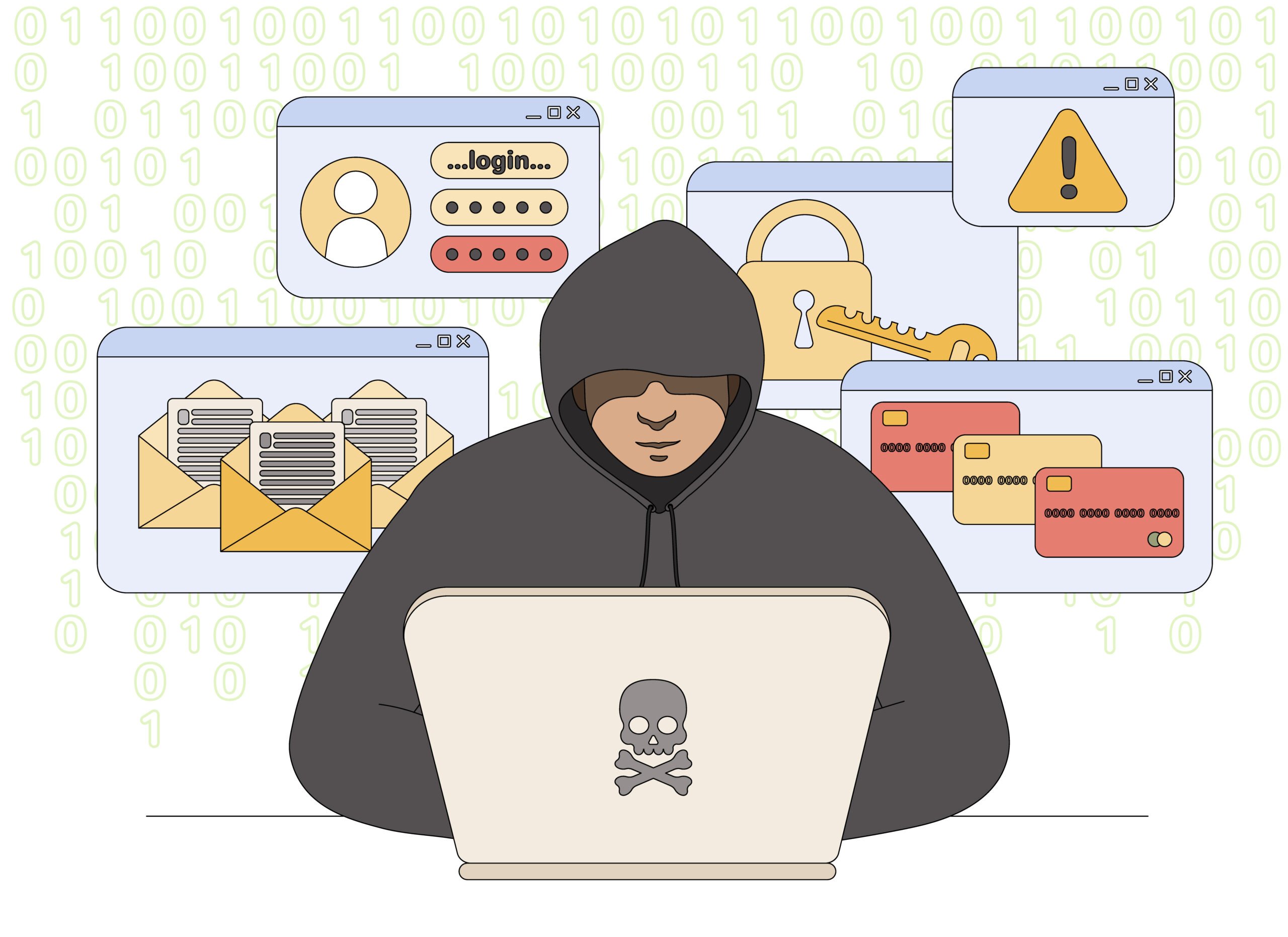Understanding what is a firewall in networking has become critical as cyber threats continue targeting business infrastructure worldwide. Network vulnerabilities expose organizations to data breaches, ransomware attacks, and operational disruptions that can cost millions in recovery expenses.
A firewall serves as the essential protective barrier between trusted internal networks and potential external threats, filtering incoming and outgoing traffic based on predetermined security rules.
This fundamental network security component acts as the first line of defense, monitoring data packets and blocking unauthorized access attempts before they reach critical systems. Implementing proper firewall protection is no longer optional—it’s a business necessity for maintaining secure, reliable network operations.
Related Topic: Remote IT Services Security: Complete Framework for Protecting Your Business
What Is a Firewall and Why Is It Essential for Network Security?
A firewall is a security barrier that protects digital assets from unauthorized access and cyber threats. This essential network security device serves as the first line of defense for any computer network, monitoring incoming and outgoing communications. A firewall is a network security device that monitors all data transmissions between trusted internal networks and potentially harmful external sources.
In our experience helping businesses secure their networks, we’ve found that understanding firewall fundamentals is the first step toward building robust cybersecurity defenses.
The purpose of a firewall extends beyond simple blocking mechanisms. This network security device that monitors data packet movement analyzes each transmission against established security policies. The firewall examines network traffic patterns, identifying suspicious activities and preventing malicious data packet infiltration. Modern firewall systems provide comprehensive network protection through intelligent filtering and real-time threat assessment.
Contemporary firewall technology integrates seamlessly with existing network infrastructure, providing scalable security system capabilities. These devices protect computer network assets while maintaining optimal performance levels. Advanced firewall configurations offer granular control over network access, enabling organizations to implement customized security protocols. The network security framework relies heavily on firewall technology to maintain robust protection against evolving cyber threats.
Related Topic: Strategic Digital Transformation Consulting | Get Future-Ready Now
How Firewalls Work: Traffic Filtering and Security Rules
Understanding how firewall work begins with examining traffic control mechanisms. The system controls incoming and outgoing network communications through systematic inspection processes. A firewall allows legitimate communications while blocking unauthorized access attempts. Each data packet undergoes thorough evaluation before receiving permission to proceed through the network infrastructure.
When we implement firewall solutions for clients, we always emphasize the importance of understanding how traffic filtering actually works at the packet level.
Firewall rules form the foundation of network protection strategies. These security rules define acceptable communication parameters and establish filtering criteria. A firewall typically operates using a comprehensive set of security rules that determine access permissions. The system evaluates network traffic based on predetermined criteria, comparing each data packet and network packet against established guidelines.
The filtering process determines which specific types of traffic receive authorization. Communications that meet established criteria are allowed through the firewall, while suspicious or unauthorized requests face immediate rejection. Only approved transmissions can pass through the firewall successfully. This systematic approach ensures comprehensive network protection while maintaining operational efficiency for legitimate business communications.
Related Topic: Why Every Business Needs a Disaster Recovery Plan?
Firewall Benefits: ROI and Network Security Advantages
The advantages of implementing firewall protection extend across multiple organizational levels. Modern systems firewall protect critical business assets while maintaining operational continuity. Organizations that protect your network infrastructure experience significantly reduced security incidents and data breaches. Firewall protection serves as a cost-effective investment, with many companies reporting substantial ROI through prevented cyber attacks. A firewall to protect essential systems delivers measurable value through enhanced network security protocols.
We’ve seen countless businesses avoid costly security breaches simply by implementing proper firewall protection as part of their comprehensive security strategy.
Understanding why businesses need robust protection reveals compelling financial justifications. Companies must protect your network and protect the network infrastructure from unauthorized access attempts that could result in costly data compromises. Network security investments demonstrate clear returns through reduced incident response costs and maintained business continuity. A secure network environment is essential to network security strategies, preventing expensive downtime and regulatory penalties. Protecting the network from unwanted traffic eliminates bandwidth waste and improves performance efficiency.
Firewall security implementations create resilient network environment foundations that support business growth. Organizations implementing security solution frameworks report improved client confidence and competitive advantages. Modern security solution technologies provide scalable protection that adapts to evolving threat landscapes while delivering consistent ROI through risk mitigation.
Related Topic: The Smart Way to Choose a ZTNA Vendor | Right Hand Technology Group
Firewall Installation and Configuration: Setup Best Practices
Setting up effective protection requires careful planning and systematic approach. Before firewall deployment, implementing comprehensive security controls and protection ensures proper configuration and optimal security. Initial firewall configurations must align with organizational security objectives and business requirements. To use a firewall effectively, administrators should establish clear implementation timelines and resource allocation strategies.
Our security team regularly guides organizations through firewall deployment, and we’ve learned that proper configuration is critical for effective network protection.
Installing enterprise-grade protection involves multiple technical considerations. Modern firewall systems offer extensive firewall capabilities that support diverse organizational needs. Proper installation requires adequate network resources allocation and technical expertise. Implementation within a corporate network demands coordination between IT teams and business stakeholders. The internal network infrastructure must accommodate new security protocols without disrupting operations.
Verifying implementation success requires systematic testing and validation procedures. Regular firewall configurations audits ensure optimal performance and security effectiveness. Monitoring internal network traffic patterns helps identify potential issues before they impact operations. Testing communication between the network and the internet verifies proper rule implementation.
Related Topic: Master Cybersecurity Awareness Training to Avoid Costly Breaches
Types of Firewalls: Hardware, Software, and Next-Generation Solutions
Modern protection systems exist in both hardware and software configurations, addressing diverse organizational requirements. Each type of firewall offers distinct advantages depending on deployment scenarios and security objectives. Software firewalls provide cost-effective protection for individual workstations and small networks. Software firewalls integrate seamlessly with existing operating systems, delivering comprehensive endpoint security. Advanced firewall technology continues evolving to address emerging threats.
After evaluating numerous firewall technologies for our clients, we recommend choosing solutions based on specific network requirements and security objectives.
The security industry recognizes four primary type of firewall categories, each serving different protection requirements. Understanding different types of firewalls helps organizations make informed technology decisions. A next-generation firewall provides advanced threat detection and application-level filtering capabilities. Next-generation firewall systems integrate multiple security functions into unified platforms. The stateful firewall monitors connection states and maintains session information for enhanced security. Stateful firewall technology offers superior protection compared to basic packet filtering methods. A proxy firewall creates secure intermediary connections between internal and external networks. Proxy firewall implementations provide additional anonymity and content filtering capabilities. An application firewall focuses specifically on protecting web-based applications from targeted attacks. Web application firewall solutions defend against SQL injection and cross-site scripting threats. Stateful inspection firewall systems combine packet filtering with connection monitoring.
Contemporary next-generation firewall platforms surpass traditional firewall limitations through integrated security features. Next generation firewall solutions offer unified threat management capabilities. Modern firewalls incorporate artificial intelligence and machine learning for enhanced threat detection. Organizations evaluating firewall options should consider managed hardware firewall strategies that provide enterprise-level protection for small and medium businesses.
Related Topic: How Managed Detection and Response Keeps Your Business Safe from Cyber Threats?
Firewall vs Router: Network Infrastructure Integration
Router-based protection provides basic security, but comprehensive network firewall implementation offers superior protection levels. Organizations require dedicated security solutions beyond standard router capabilities. Each computer or network segment benefits from layered security approaches that address specific vulnerabilities. Protection operates across multiple network layer levels, creating comprehensive defense strategies. A trusted internal network and untrusted external environment requires specialized security tools for proper boundary management.
We often help businesses understand how firewalls integrate with existing infrastructure, including routers, VPNs, and other security components.
Advanced network firewall systems create secure boundaries between internal network and untrusted external sources. Effective security architectures separate network and untrusted external networks through sophisticated filtering mechanisms. Proper implementation establishes clear divisions between trusted network and an untrusted environment. Security policies must address communication between network and an untrusted network segment. Modern security frameworks monitor and control devices within the network while maintaining operational efficiency.
Virtual private network technology complements firewall protection through encrypted communication channels. A virtual private network creates secure tunnels that protect data transmission across public networks. Network address translation provides additional security by hiding internal network structures from external threats. Organizations benefit from establishing private network across a public infrastructure while maintaining security standards.
Related Topic: Why Every Business Needs a Disaster Recovery Plan?
Firewall Management and Optimization Strategies
Disabling protection requires careful consideration of security implications and business requirements. Each firewall feature serves critical security functions that protect organizational assets from cyber threats. Modern systems firewalls provide essential protection that should only be disabled for specific troubleshooting purposes. Understanding how firewalls function helps administrators make informed decisions about temporary security modifications.
Through ongoing firewall management for our clients, we’ve identified key optimization strategies that significantly improve both security effectiveness and network performance.
Verification processes ensure optimal security system functionality and performance. Advanced firewall feature monitoring capabilities provide real-time status information and performance metrics. Contemporary systems firewalls offer comprehensive diagnostic tools that simplify status verification procedures. Modern protection systems firewalls can also generate detailed reports about network activity and security events. Administrators should regularly review past firewall logs to identify potential security issues and optimization opportunities.
Leading security solutions incorporate advanced technologies that provide superior protection capabilities. High-performance systems firewalls also integrate artificial intelligence and machine learning for enhanced threat detection. Organizations benefit from implementing specific types of advanced security technologies that address evolving cyber threats. Security professionals should learn what a firewall can accomplish through proper configuration and management. Understanding that a firewall is a security system enables organizations to maximize protection effectiveness. Modern firewall in networking environments provides scalable security solutions that adapt to changing business requirements.
Related Topic: The Smart Way to Choose a ZTNA Vendor | Right Hand Technology Group
Final Thoughts:
Gaining a clear understanding of what is a firewall in networking equips organizations to make smarter security decisions that safeguard critical data and keep operations running smoothly. Today’s firewalls go far beyond basic traffic filtering they deliver advanced intrusion prevention, intelligent threat detection, and adaptive defense mechanisms that evolve alongside modern cyber risks.
The value of investing in a properly configured firewall is undeniable. From reducing costly security incidents to meeting regulatory compliance requirements and protecting vital infrastructure, the benefits extend across every layer of your business. Organizations that prioritize firewall security establish a strong defensive foundation that supports long-term growth, fosters innovation, and enhances competitive advantage.
For the best results, professional deployment is key. Expert configuration, proactive monitoring, and ongoing adjustments ensure your firewall is always ready to counter sophisticated cyber threats targeting network vulnerabilities.
If you’re ready to implement enterprise-grade firewall protection and elevate your cybersecurity posture, Right Hand Technology Group offers tailored network security solutions. Our services include detailed security assessments, firewall setup, and continuous monitoring keeping your business protected around the clock.
FAQ
What are the three main functions of a firewall?
Modern firewalls function through three primary mechanisms: monitoring network traffic for suspicious activities, enforcing predetermined security rules across all communications, and blocking unauthorized access attempts. These capabilities work together to provide comprehensive network protection and maintain organizational security standards.
Which firewall is most commonly used?
The most popular type of firewall deployed in enterprise environments is the next-generation firewall, which provides advanced threat detection capabilities. These systems integrate multiple network security functions into unified platforms, offering comprehensive protection that surpasses traditional filtering methods.
What is the difference between a firewall and a file block?
A firewall is a comprehensive security device that monitors and controls network communications between trusted and untrusted zones. Unlike file blocking software, a firewall provides network-level protection by examining data packets and enforcing access policies across entire network infrastructure.
Can a firewall prevent all attacks?
While systems firewall protect against many cyber threats, no single security solution provides complete protection against all attack vectors. Effective network security requires layered defense strategies that combine firewall protection with additional security tools and monitoring systems.
Are firewalls layer 2 or 3?
Traditional firewall systems primarily operate at network layer 3, examining IP addresses and routing information. However, modern firewall technology can analyze network traffic across multiple network layers, including application-level communications, providing comprehensive protection through multi-layered inspection capabilities.











